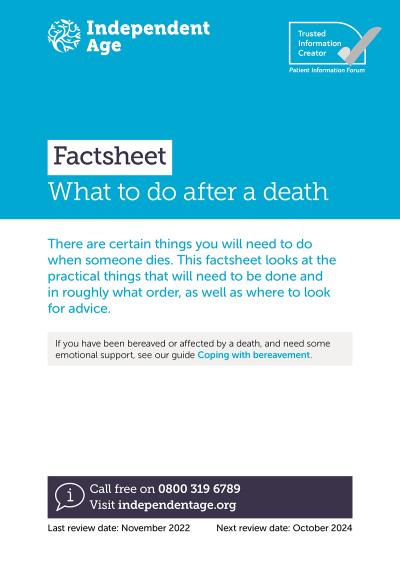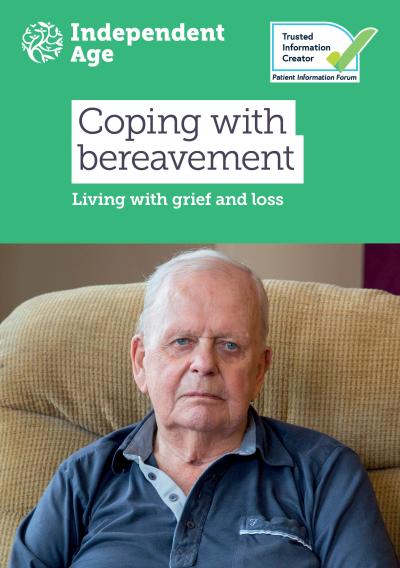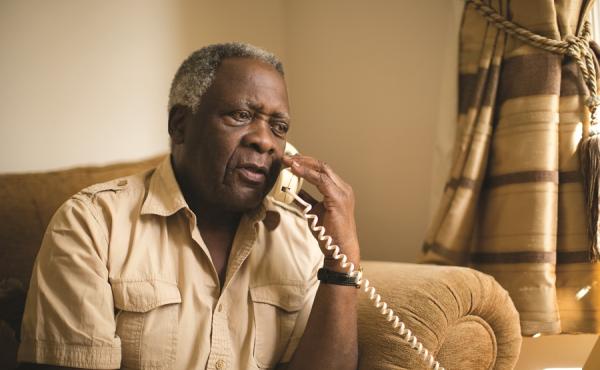Related publications

What to do after a death


There are a number of things that need to be done when someone dies. Start by getting a medical certificate and registering the death.
You’ll need to do this as soon after the death as possible. The medical certificate states the cause of death and is completed by a medical professional. If the person died at home, you should call their GP straight away. If they died in hospital, the hospital will usually issue the medical certificate. Let the person who is completing the medical certificate know if you’re planning a cremation for the person who has died. In this case, you'll need to get a cremation medical certificate as well, which will need to be signed by a second doctor.
Occasionally, the doctor might not be able to issue the certificate, for example because they’re unsure of the cause of death. In this case they’ll refer the death to a coroner. Try not to worry if this happens. The coroner might decide the cause of death is clear or could ask for a post-mortem or inquest. This can take a while, so the funeral might be delayed.
The medical certificate is free of charge. As part of the medical certificate, you’ll be given the 'notice to informant', confirming that the certificate has been signed and giving you information on how to register the death.
If they died abroad, the death will need to be registered with that country. Contact the British Consulate in that country for advice on how to do that.
The process will be slightly different if they lived in England or Wales but died in Scotland or Northern Ireland. Talk to the authorities in the area they died for advice on how to proceed.
You’ll need to register the death within five days if you're in England or Wales, and within eight days if you're in Scotland. You can do this once you’ve got the medical certificate or the coroner has allowed the death to be registered. To do this, contact the local register office - you can find them online at:
It’s best to contact the register office in the area the person died. You can use a different register office, but this will take a few days longer.
It’s usually the closest relative who registers the death. Only certain people can register the death, including a relative who was present during the final illness, anyone who was present at the death or an administrator at the hospital where they died. For a full list, visit visit gov.uk for England and Wales, and mygov.scot for Scotland.
It usually takes around half an hour to register the death. You’ll need to take a few things with you:
and if you can, the person’s
You’ll also need to give the following information about the person who died:
You should also take proof of your own identity.
Once the death has been registered, you’ll be given:
It’s free to register a death, but you’ll be charged £11 for each copy of the death certificate. You’ll probably need several copies of the death certificate, as banks, insurance companies and other companies often require these to confirm the death.
For more information, see our factsheet What to do after a death.
If you have been bereaved and need some emotional support, see our guide Coping with bereavement.